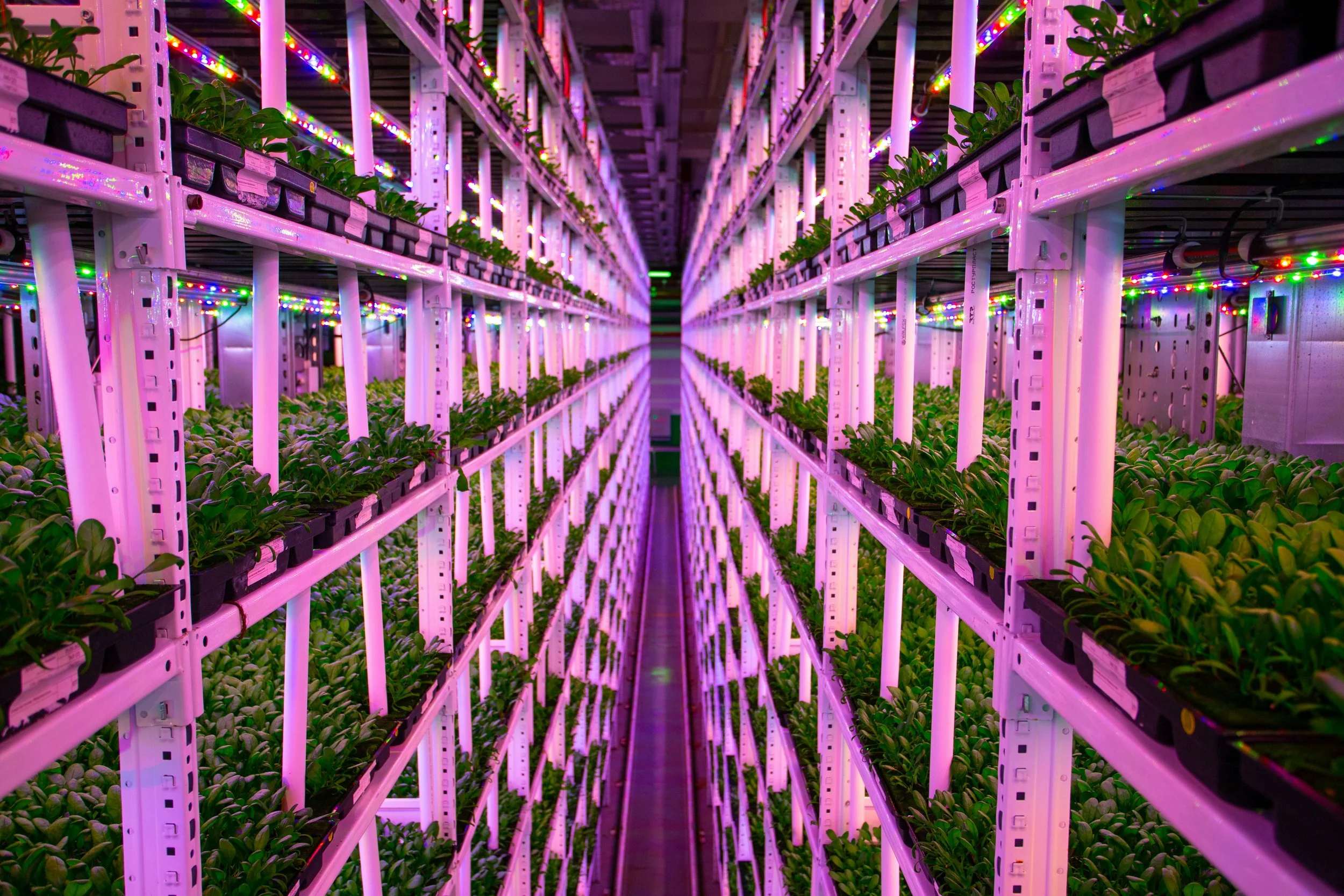Can the UK Compete in Insect Farming?
Over the past year, I’ve travelled across 14 countries and visited over 50 black soldier fly (BSF) companies as part of my Nuffield Farming Scholarship. From the soybean fields of Brazil to modular farms in Kenya, from high-tech factories in Denmark to frass-focused compost systems in Rwanda — I’ve seen the good, the bad, and the baffling.
This blog series distills what I’ve learnt into practical, occasionally blunt, insights that I hope will help others avoid the common pitfalls of this industry and build something better.
👉 Missed the last post? Start here: The One Metric That Matters in BSF Farming (And Why No One Talks About It)
Today, we focus on: Can the UK Compete in Insect Farming?
Let’s start with the maths
In the last blog, I introduced the Blended Substitute Value Ratio (BSVR) — a fancy way of saying profit. In ideal conditions, scaled BSF farming with outputs sold at commodity prices can achieve a BSVR of 1.41 — meaning for every £1 you spend, you generate £1.41 of value. That's profitable and fits with agriculture.
Now apply current UK feedstock conditions:
Feedstock cost: £60/tonne
Feed conversion (wet feedstock - wet larvae): 20%
Dry matter of larvae: 30%
Protein content of dry matter: 50%
That means you need ~33.3 tonnes of feedstock to produce 1 tonne of defatted BSF protein meal
Raw material cost alone: £2,000 per tonne of protein meal
Compare that to soymeal at £350/tonne, and you’re priced out big time — before you even pay for labour, seed larvae, or power.
That gives the UK a rough BSVR of 0.19 no matter how efficient your operation is.
That’s not a farming problem. It’s a policy problem.
So what’s the UK’s BSF problem?
We’ve regulated ourselves into a corner. UK insect farms are legally blocked from using many of the waste streams that BSF are biologically suited to process.
Here’s the relevant framework:
ABP Regulations 2013 — which implement Assimilated Laws 1069/2009 and 142/2011 — strictly control the use of animal by-products in feed
The TSE Regulation (999/2001) — rooted in the post-BSE era — effectively prohibits processed insect protein from being used in livestock feed due to prion disease concerns
Article 3(5) of Assimilated Regulations (EC) No 1069/2009, which deals with animal by-products not intended for human consumption, state that “any animals bred or kept for the production of food, wool, fur, feathers, skin or other products, or for other farming purposes”. This means BSFL are subject to all of the same rules that apply to a cow, pig or chicken.
As a result:
❌ No post-consumer food waste can be used as feedstock
❌ No manures
❌ No meat products
❌ No use of processed insect protein in livestock feed
In other words: we’re treating BSF larvae as if they carry the same risks as the materials they consume — even though, biologically, they neutralise most of them.
Meanwhile, in Kenya, South Africa, Vietnam, Chile and many parts of the world, BSF farms are allowed to process post-consumer waste and animal by-products. The UK, by contrast, insists we feed insects what humans could eat — and then wonder why it’s not cost-effective, or environmentally friendly.
Let's take history lesson in agri-tech
We’re at a fork in the road. The UK BSF sector can go one of two ways:
🟢 Anaerobic Digestion: A slow burner that won the long game
AD had big aspirations and the technology was revolutionary for the time. Most importantly, it solved real problems of the time. In the 60s and 70s food waste and energy security were EU government priorities so they backed it and encouraged industry adoption. Infrastructure then matured over 40 years. All with the help of:
Feed-in tariffs
RHI subsidies
Grid access incentives
It scaled. And today, in many cases, it’s a core part of the UK’s (and Europe's) circular food infrastructure.
🔴 Vertical Farming: A flashy failure built on vibes
Vertical farming also had big aspirations and the technology was revolutionary for the time. But it didn’t solve a real problem. It has claimed to be able to produce fruit, veg and salad at a fraction of the land footprint and reduce food miles compared to more traditional methods of agriculture.
However, it’s expensive, and the energy inputs actually outweigh the savings on food miles. It has largely served to greenwash investment decks, becoming a vanity project for investors, who are under increasing pressure to satisfy an ESG agenda. Without any profitability, it could never last. So it has eventually failed.
It is important for the BSF industry to not blindly follow vertical farming — but let’s learn from it and follow the path of AD. The key lesson here is to align with solving real problems of today.
So, how can BSF farming in the UK help?
BSF farming isn’t just about protein. It actually has more potential uses than any other alternative-protein on the table:
🥦 Food security (local, circular protein inputs) - growing threat of war, global tariff dynamics and climate change are making food security a higher priority
🚛 Waste management (organic waste valorisation) - the UK has signed up to the Courtauld Agreement, committing to a 50% reduction in food waste by 2030, whilst the Simpler Recycling Scheme mean all food waste will be separated. This is particularly interesting as there is regulatory momentum building here. Are BSF classified as a livestock if they are simply here to process waste and not produce food? It’s worth considering that maggots for fishing bait are allowed Category 2 ABP’s, so what is the difference?
🌊 Water quality (livestock slurry treatment and pathogen removal) - increased pressure on places like the Wye Valley and failing water companies is increasing the urgency on pollution reduction
💨 Carbon reduction (offsetting landfill methane, reducing feed imports, potential carbon credits) - widespread net-zero targets by 2050 are providing huge incentives
🌱 Soil regeneration (frass as a regenerative input) - regenerative agriculture and a movement to natural practices in the UK, backed by new government incentive structures
No other protein platform offers this level of versatility. Not soy. Not pea protein. Not fermentation. Not algae. Whilst protein is a popular motivation behind BSF, it isn't not the only one and this versatility gives it every reason to gain investment in the UK. Should BSF protein not be able to break down the barriers for the industry to thrive, there are many more opportunities available for the BSF industry.
How to enable BSF farming in the UK
Here’s the fix:
Update the ABP and feed regulations to reflect scientific risk, not legacy panic
Separate the livestock classification of black soldier fly so that it can legally be fed waste streams, as it does in nature.
Allow frass as a certified organic and farming input
Defra and UKRI to support the sector with targeted innovation funding
Industry coordination to establish standards and traceability
Introduce a sector subsidy/incentive to encourage adoption
In the meantime, BSF farming is absolutely possible at a small scale. Pet food markets are already buying whole dried larvae and BSF meal in the double digit tonnes. Bait maggots will sell in retail for £8/kg, which is easily 6x the cost of production for BSF, whilst frass can be heat treated and sold in premium garden markets. Wild bird feed has a premium attached, although mealworms dominate this space. Organic farming or farming with a higher purpose, such as direct sales from farm shops would benefit from a better livestock welfare and sustainability narrative. All of these examples require smart marketing and a lot of hustle. They would suit smaller volumes very well. But, given the future prospects of this industry, the best thing they achieve is getting the industry going. Until then, the regulations must change to enable serious progression of the industry.
Coming next…
In the next post:
👉 “Inside the World’s Most Innovative BSF Farms (And What Makes Them Work)”
Until then, if you’re building, funding, or regulating BSF in the UK — let’s talk.





